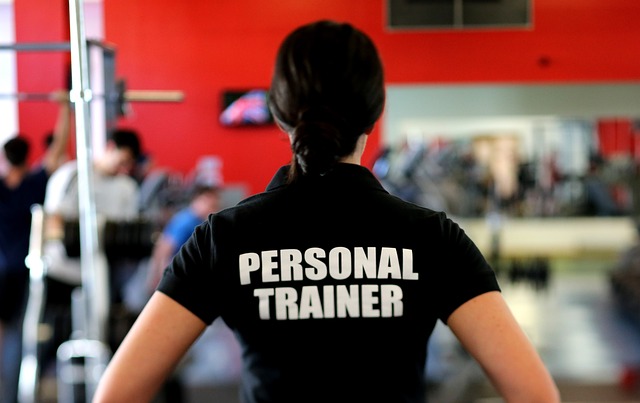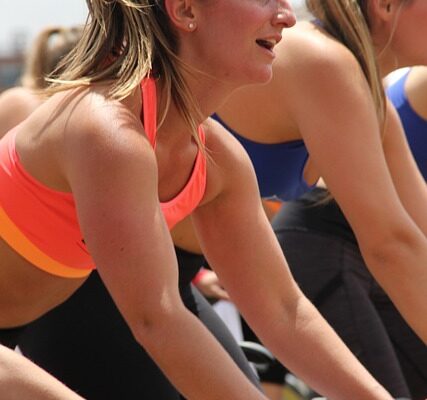We have more tips on what you need to know about indoor cycling.
Click Here to Read Part 1 on indoor cycling
Saddle Pain Is Normal
If you haven’t been riding a bike for a while, you might be shocked to experience a bruise-like sensation in your groin in the days following a lesson. This is typical.
While it may be difficult at first, your body will become accustomed to the workout, and you will no longer feel bruised, which will take a few courses. However, if you want to eliminate saddle soreness entirely, you can attempt a few pain-reduction measures.
Indoor Cycling Etiquette Exists.
There is correct gym etiquette, and there is proper indoor cycling etiquette, especially when it comes to group cycling courses. It’s considered impolite, for example, to answer your cell phone during class or to depart without wiping down your bike.

Before your first session, review the fundamentals, and if you’re going to a new studio, ask the instructor if there are any studio-specific restrictions you should be aware of.
Indoor cycling has numerous advantages.
After taking your first indoor cycling class, you’ll have no concerns about the activity’s capacity to raise your heart rate while also burning calories in your lower body. Cycling classes and workouts are extremely challenging, and like with all types of cardiovascular training, cycling can improve heart and lung function as well as body composition.
- The advantages do not stop there. Indoor cycling can also be used to:
- Reduce the severity of chronic medical diseases such as high blood pressure, type 2 diabetes, and osteoarthritis.
- Increase job productivity by improving memory and cognition.
- Help with weight loss
- Increase happiness and mood
- Boost your sex life
In short, if you enjoy the activity and are willing to continue with it (consistency is crucial in any exercise program), cycling may offer enormous dividends in terms of overall health and well-being.
Not Every Instructor or Studio Is Created with Equal
With the popularity of indoor cycling came an influx of cycling studios, styles, forms, and instructors. Just like any studio, some studios and instructors are better than others, as in everything, and sometimes “better” is a matter of personal opinion.
Some classes, for example, use loud music and beat-based, almost dance-like choreography, and others emphasize heart rate, watts, or rotations per minute(RPM).
Similarly, some instructors provide precise and crisp curing and modeling, whereas others take a more “fluid” approach to bike riding (and still others model poor form and poor instruction). It’s a good idea to test out a few studios or instructors before settling on one or concluding cycling isn’t for you.
Most large gyms include group fitness sessions as part of their membership or for a small monthly cost. Cycling-specific studios are not the same. Because group cycling lessons are these studios’ sole source of income, they charge a premium for each class, which can range from $20 to $35, depending on the studio and region.
It’s possible to go too far
Cycling is a form of exercise. It is a form of voluntary physical stress, more precisely, a form of voluntary high-intensity physical stress. This means that injuries are possible, especially if you push yourself too hard, fail to employ appropriate form, or disregard the significance of rest and rehabilitation.

It’s usually a good idea to listen to your body and don’t overdo it, especially if you’re just starting out.
Book a Bike in Advance
Cycling lessons fill up rapidly, particularly at renowned cycling studios. Inquire about the bike reservation policy at your studio; some have a first-come, first-served policy, while others allow attendees to reserve bikes up to a week in advance.
If you’re set on taking a specific class, sign up as soon as possible. This will not only keep you from missing out if the class fills up quickly, but it will also allow you to choose which bike you will ride throughout your lesson.
If you’re new and feeling self-conscious, you can be in the back row, or you can choose a seat in the front row if you want to see the instructor more clearly.
Inquire if there is anything you need to bring to indoor cycling class.
In most situations, you don’t need to bring anything other than your own body and a bottle of water to a cycling class, but it’s always a good idea to ask someone from the studio if they have any advice for novices. They may advise you to wear padded shorts or carry a small sweat towel to be comfortable and dry.
Before you leave, make sure you have enough fuel.
You don’t want to go to a group cycling class if you’re hungry. Your body requires nutrition to power itself through strenuous workouts, and if you don’t eat before class, you’ll likely feel weak and exhausted.
Make sure you have a small lunch with carbs and proteins 30 minutes to an hour before class. You could, for example, consume a protein bar, half a peanut butter sandwich, or a banana with string cheese.
Don’t forget to hydrate while you’re at it. Drink one to two glasses of water in the hour before class, and bring a water bottle with you so you may sip as you bike. During high-intensity exercise, drink several ounces of water every 10 to 15 minutes.
Pack an Extra Set of Clothes
Remember how steamy, sweaty indoor cycling lessons can be? Nothing is grosser or more uncomfortable than driving home from the cycling studio in sweaty clothes. Bring a change of clothes to change into after your ride, and don’t forget to bring clean underwear!
Introduce Yourself to the Professor
Instructors are available to assist. They want to learn more about you. They’re curious if you’re fresh to the class. They try to make you feel at ease so that you will want to return. Your overall experience will enhance if you arrive a little early to class and introduce yourself to your instructor.

You can ask for assistance in setting up your bike and whether you should be aware of anything before riding, and you can express your feelings regarding personal comments. For example, if you don’t want your classmates to notice that you’re new, you can request that the instructor not bring attention to you or correct you during class.
To Conclude on Indoor Cycling
Indoor cycling is a fantastic approach to improving cardiovascular fitness and lower-body muscular endurance, but it’s important to mix in other types of training for a well-rounded workout regimen.
By including yoga, strength training, or other group exercise programs into your routine, you can lower your risk of overuse injuries while improving other aspects of your fitness, such as flexibility and muscle strength.
